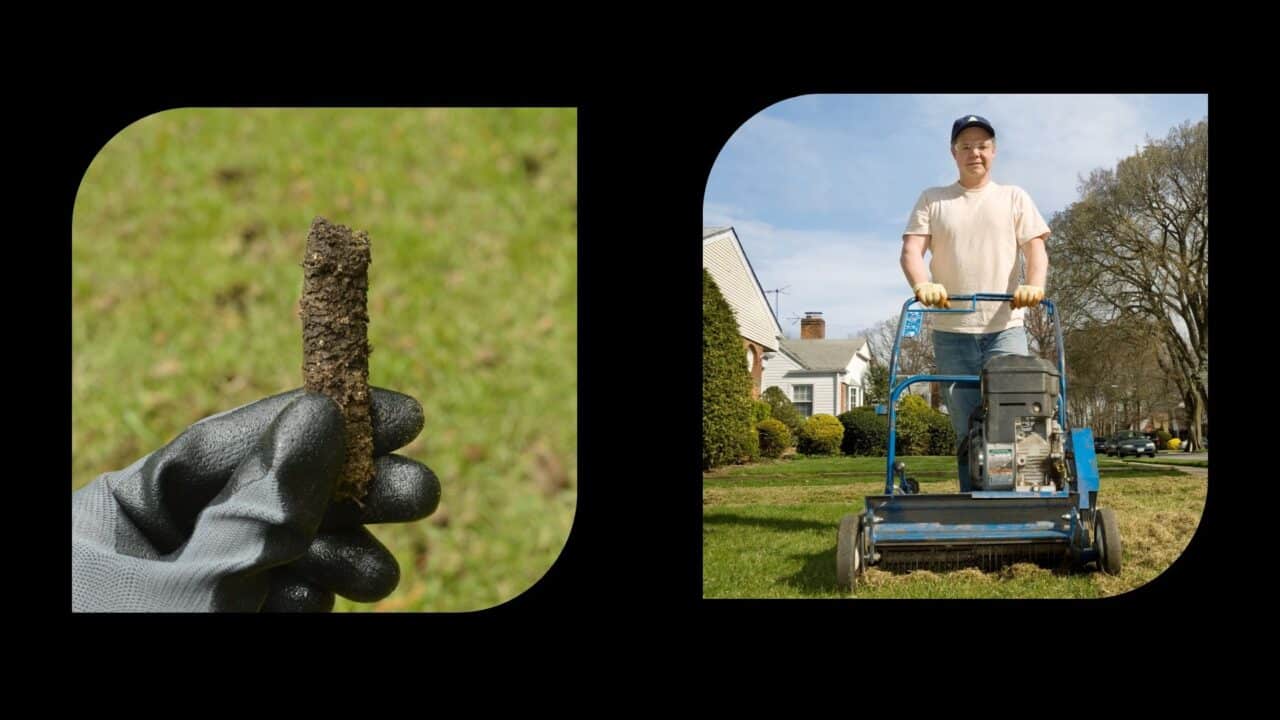Maintaining a healthy, lush lawn can be challenging, especially when deciding between aeration vs. dethatching. Both are vital lawn care practices, but knowing when to use each can make all the difference. This guide explains what aeration and dethatching are, their benefits, and how to decide which your lawn needs.
What Is Lawn Aeration?
Lawn aeration involves perforating the soil with small holes to improve airflow, water penetration, and nutrient absorption. This process is essential for lawns with compacted soil or those that experience high foot traffic.
Benefits of Aeration
- Relieves Soil Compaction: Aeration loosens compacted soil, allowing roots to grow deeper.
- Improves Drainage: Better water infiltration prevents puddling and runoff.
- Enhances Nutrient Uptake: Nutrients from fertilizers or organic matter reach the roots more effectively.
For more about lawn care basics, check out our seasonal lawn care guide.
What Is Dethatching?
Dethatching removes the thatch layer, a dense layer of dead grass and organic matter that accumulates between the soil and grass blades. If left untreated, excessive thatch can suffocate your lawn and block essential nutrients.
Benefits of Dethatching
- Removes Excess Thatch: Opens pathways for air, water, and nutrients to penetrate the soil.
- Reduces Pest and Disease Risks: A thick thatch layer often harbors pests and diseases.
- Improves Water Absorption: Eliminates water pooling caused by an overly spongy lawn.
Learn more about keeping your lawn vibrant with our professional lawn care services.
Aeration vs. Dethatching: Key Differences
The choice between aeration and dethatching depends on your lawn’s specific needs:
Choose Aeration If:
- Your soil feels hard and compacted.
- Water pools on the surface after rainfall.
- Grass growth is thin and uneven, especially in high-traffic areas.
Choose Dethatching If:
- Your lawn has a thick thatch layer over ½ inch.
- The grass feels spongy when you walk on it.
- Your lawn struggles to thrive despite watering and fertilization.
When to Perform Each Service
- Aeration Timing:
- Cool-season grasses: Early spring or fall.
- Warm-season grasses: Late spring or early summer.
- Dethatching Timing:
- Cool-season grasses: Early spring or fall.
- Warm-season grasses: Late spring or early summer.
For a complete breakdown of timing and tools, visit our comprehensive lawn care article.
Combining Aeration and Dethatching
In some cases, your lawn may benefit from both aeration and dethatching. Aerate first to loosen compacted soil, then dethatch to remove excess organic matter. This two-step approach ensures your lawn can absorb nutrients and water efficiently.
Final Thoughts
Understanding the differences between aeration vs. dethatching helps you make informed decisions for your lawn. Whether your lawn needs better soil compaction relief or thatch removal, taking the right approach ensures healthier, greener grass. For expert advice or professional services, explore our lawn care solutions.
For a visual guide on aeration and dethatching, you might find this video helpful:

